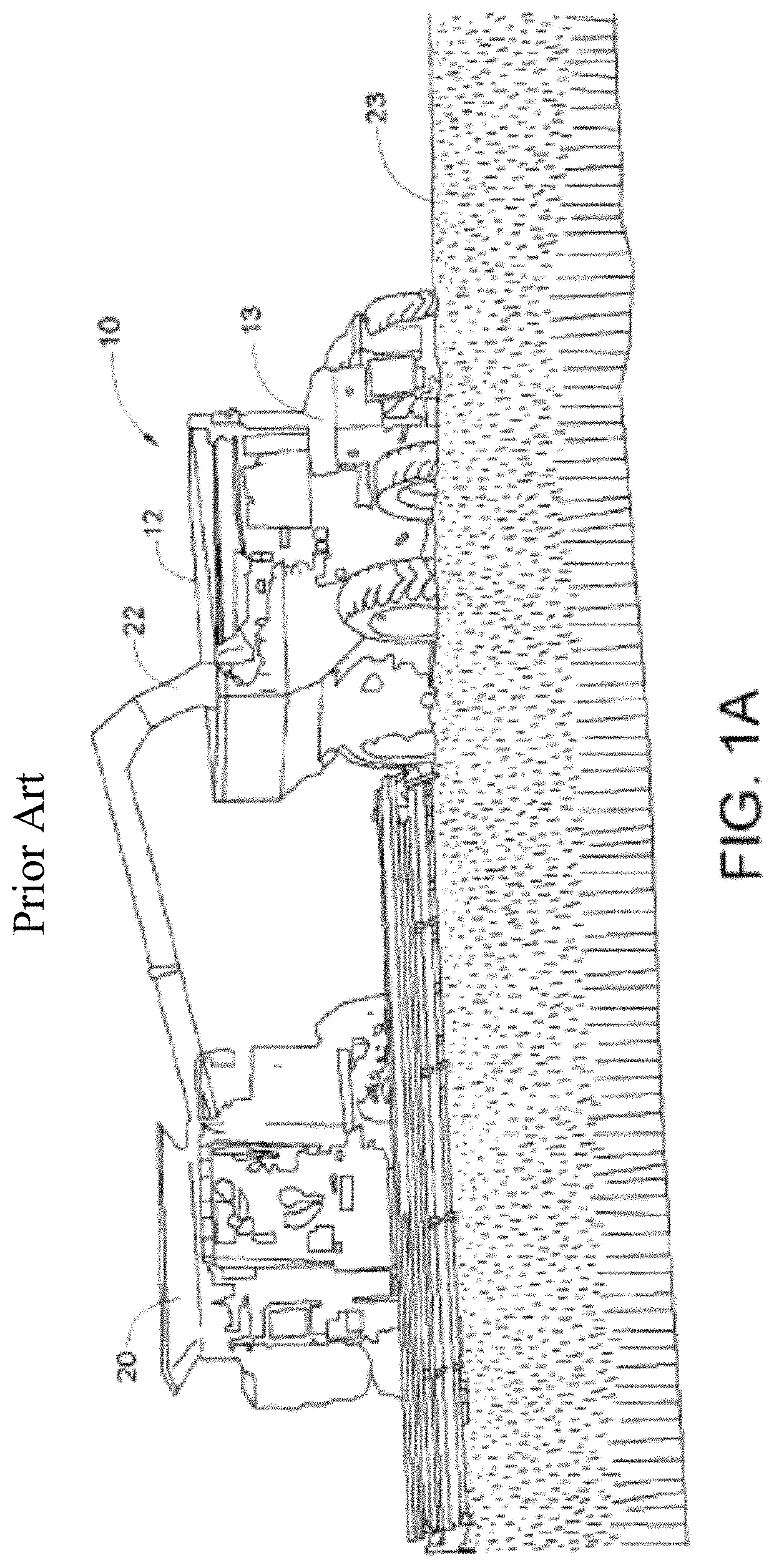System and method for measuring grain cart weight
a technology of grain carts and weights, applied in the field of apparatus and methods for weighing grain cart loads, can solve the problems of contaminating the accuracy of the measured payload weight, inaccurate weight measurement, and weight measurement compromise, and achieve the effect of enhancing display location diversity
- Summary
- Abstract
- Description
- Claims
- Application Information
AI Technical Summary
Benefits of technology
Problems solved by technology
Method used
Image
Examples
Embodiment Construction
[0032]The present invention differs from solutions offered by others as it does not have a monolithic topology, but instead uses a mobile device as the display terminal, user interface, and processing engine, and which connects wirelessly to electronics located on a grain cart. The signals from weight sensors are combined through use of a junction box; the resulting signal is then forwarded to the electronics for measurement, conversion, and transmission to the mobile device. Leveraging mobile devices in the present invention reduces product cost, increases processing capacity, and provides advanced data connectivity and navigational capabilities, while enhancing customer familiarity and thus market acceptance. This topology is shown in FIG. 4.
[0033]Exemplary embodiments of the present invention will now be described with reference to the appended drawings.
[0034]Measurement Dynamics.
[0035]Exemplary embodiments of the present invention can include techniques to assist with achieving ...
PUM
 Login to View More
Login to View More Abstract
Description
Claims
Application Information
 Login to View More
Login to View More - R&D
- Intellectual Property
- Life Sciences
- Materials
- Tech Scout
- Unparalleled Data Quality
- Higher Quality Content
- 60% Fewer Hallucinations
Browse by: Latest US Patents, China's latest patents, Technical Efficacy Thesaurus, Application Domain, Technology Topic, Popular Technical Reports.
© 2025 PatSnap. All rights reserved.Legal|Privacy policy|Modern Slavery Act Transparency Statement|Sitemap|About US| Contact US: help@patsnap.com



